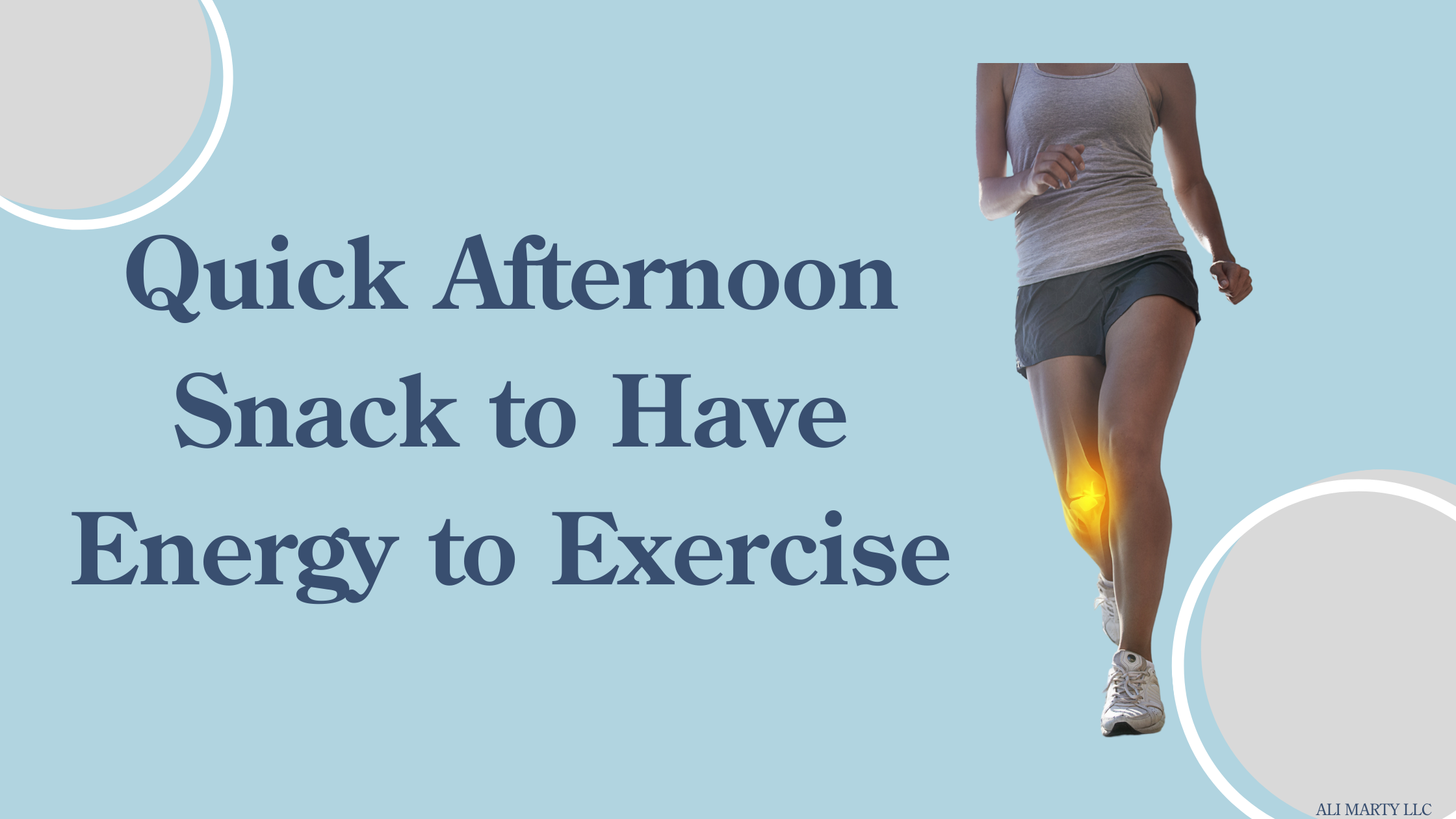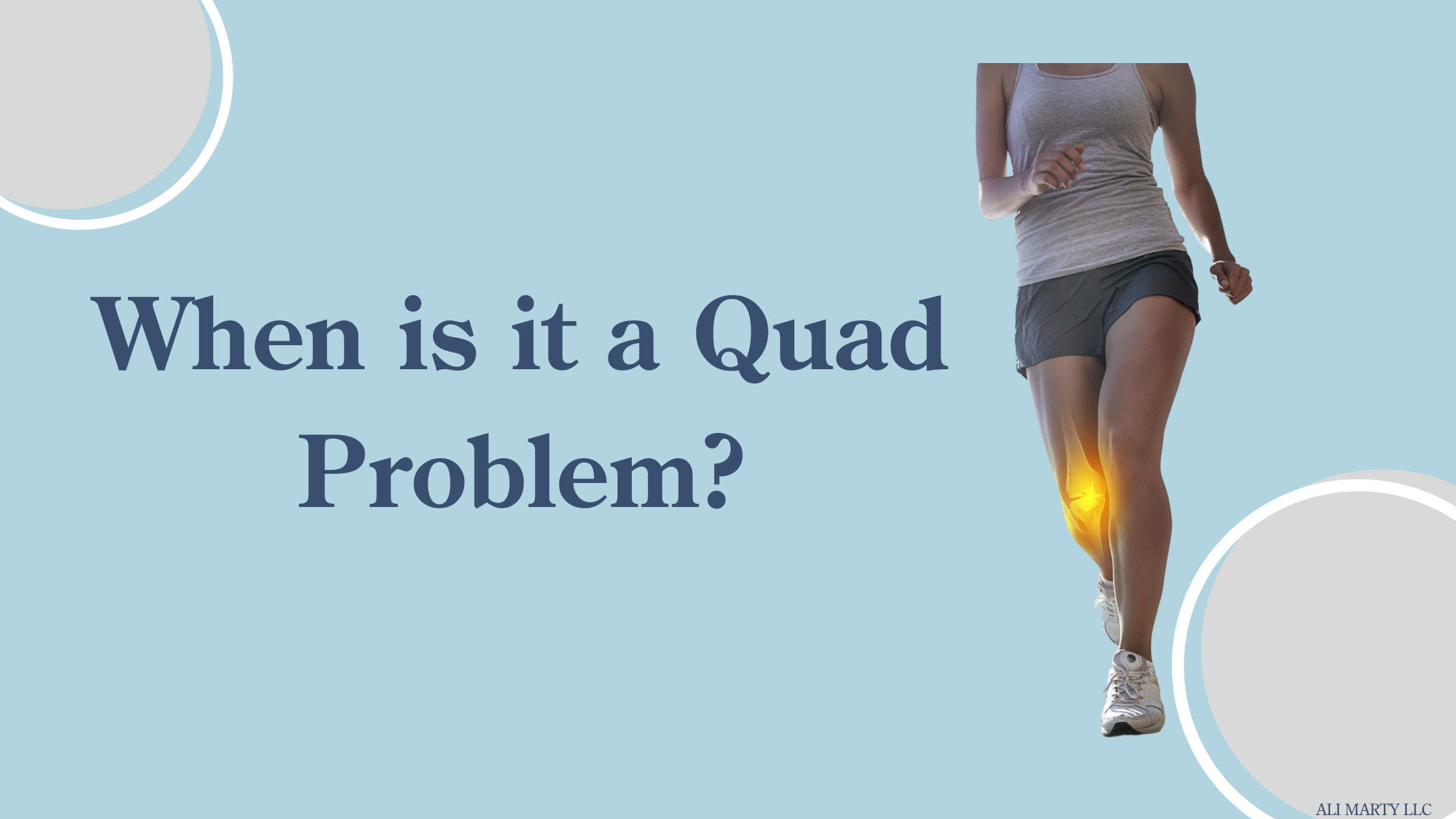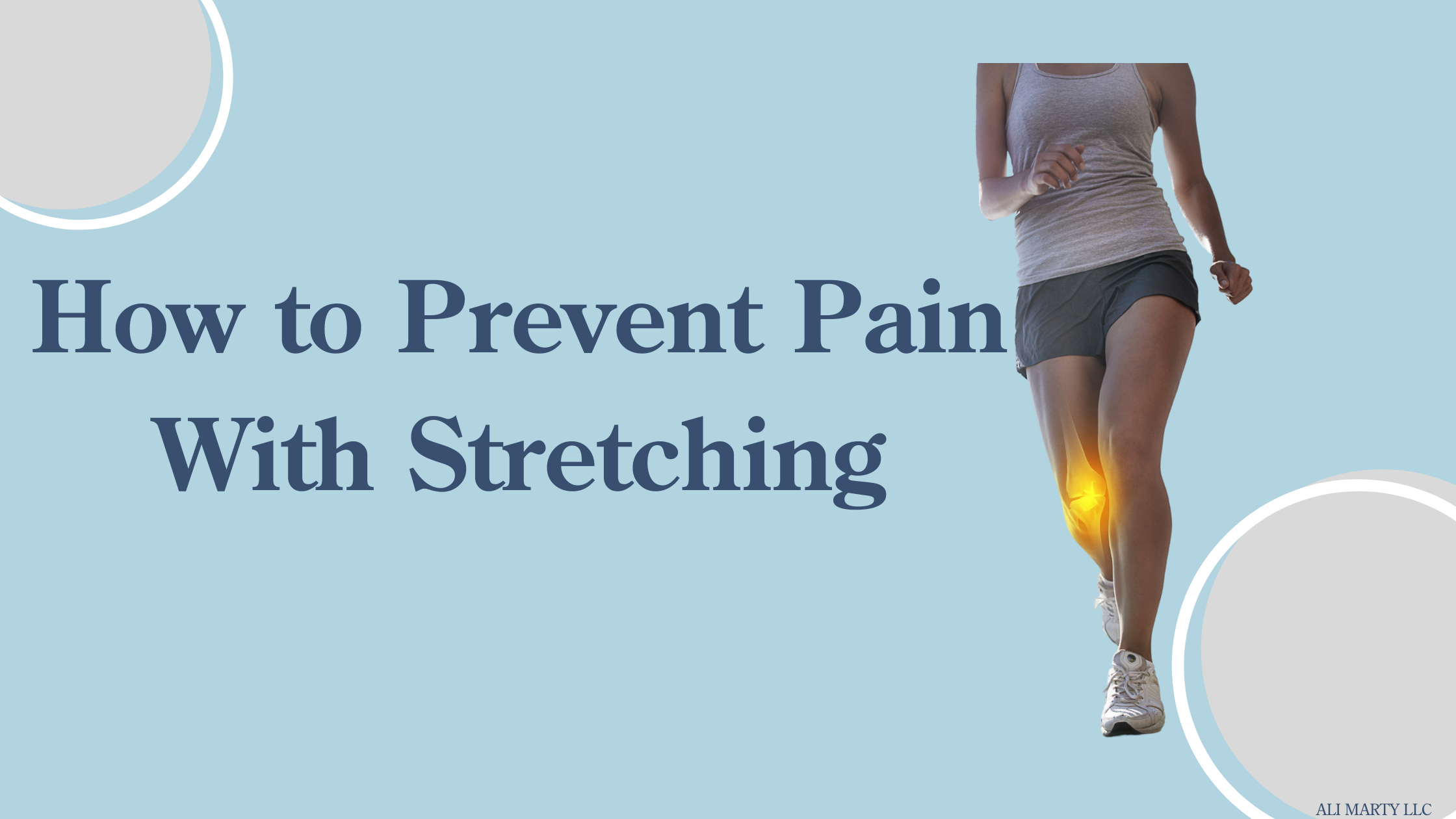
How To Have Energy & Not Crash At 2pm
If you just have carbs, just cereal, just pancakes, just waffles. Not only are you going to be hungry really soon after you eat you're also going to get a sugar crash, and you're going to be irritable and angry.

Why Walking Is OK When You Can’t Run Because Of Knee Pain
Walking and running both exercise your heart, your circulation, and your muscles. If my body is telling me it can’t walk today then I’m going to listen to it. I’m not going to lose fitness if I miss a few runs. And really, it doesn’t matter if I lose some fitness because I skipped months of running if my body said no to running. Walking can keep your body used to going the same distance (when you walk the same distance you would have run). And then I can incorporate strength training without rest to keep up my cardio

Why Walking In Water is OK When You Can’t Walk Around The Block
Water walking is an excellent way to exercise and improve tolerance to walking when you currently can’t tolerate walking on land. If you want to reduce pressure on your joints and exercise in the water if you are belly button deep you reduce your weight by half, if you are chest deep in the water you reduce your weight by 75% and finally if you are neck deep in the water you reduce your weight by 90%, so that’s also less pressure felt on your joints. You can start with slow and gentle walking, and then the faster you go the more resistance the water will give you.

Why Riding A Bike Is OK When You Can’t Walk Because Of Knee Pain
Riding a bike is 100% OK when you can’t walk or can’t walk very far. Riding a bike takes less energy to go the same distance compared to walking, riding a bike puts less pressure on your knees compared to walking, riding a bike is a good way to exercise the legs because you can improve range of motion, strength and circulation. When you want to exercise can can’t walk, choose a bike instead. You can ride inside or outside, you can ride a recumbent bike or upright bike, it’s all good exercise.

Why Sitting Too Long Bothers Your Upper Back
sitting at a desk all day for work or leisure using the computer so often can often lead to upper back and neck pain. There are a few things you can do right at your desk including every 20 minutes stand for 20 seconds, doing the chin tuck exercise and shoulder blade squeeze to keep the area mobile during the day and to bring you back into better posture. Doing regular stretching like upper trap, pec, hip flexors, laying on your belly and foam rolling your thoracic spine keep your muscles and joints mobile to maintain proper posture. Doing regular strength training like rows while sitting on a stability ball, deadlifts and bridging can help keep your core and body strong to help decrease any muscle cramping, spasms and keep you in good posture when you’re sitting.

How Do I Know If I’m Actually Eating Healthy
What does it mean to eat healthy? Everyone has a slightly or very different meaning for eating healthy. To me eating healthy means having a balanced intake of carbohydrates, fats, proteints, limiting processed foods and replacing with eating and cooking whole foods from fresh fruits and vegetables, chicken, fish and other meats, limiting or eliminating refined sugar, avoiding foods you are allergic or sensitive to and adding supplements only when there has been testing to indicate there is a need due to reduced absorption due to any reason including certain diseases of the body.

My Least Favorite Exercises
My 3 least favorite exercises ever are the burpee, the push up for people with shoulder problems and sit ups in general. I hate burpees because they put you in a vulnerable position to get hurt in so many ways. Push ups put a lot of pressure and stress on your shoulders and the small shoulder muscles like the rotator cuff and can contribute to tendinitis. Sit ups are so often done incorrectly that it puts stress on the back and the neck, and most people do sit ups for core strength and sit ups aren’t even a core exercise.

My Favorite Exercises For Leg Weakness
My favorite exercises for leg weakness are the straight leg raise, sidelying hip abduction, birddog, squats and deadlifts. When I do strength training I aim to get the muscles tired, have no pain, so I may or may not add resistance with ankle weights, resistance bands, dumbbells or barbells. The newest favorite exercise is the deadlift and surprised me the most with the benefits with the tightness in the front of my hips from sitting too long is gone when I deadlift regularly.

Should I Use the Elliptical Before I Exercise?
The elliptical is a great way to exercise. It can be used to warm up, cool down and for the days exercise for cardio or leg strength. To use the elliptical in different ways you would change the resistance level on the elliptical to make it easier and gentle for a warm up and cool down, you would have low to moderate resistance and go fast for cardio and you would ramp up the resistance and go slow.

Quick Afternoon Snack to Have Energy to Exercise
An apple for an afternoon snack, although it is healthy, it doesn’t give a balanced snack so you aren’t going to have the energy for that afternoon walk or run. Have your snack be well balanced with protein, fats and carbohydrates to have the energy you need. A good way to change this snack into a better snack is add peanut butter to the apple and mix in some protein powder into the peanut butter.

What Can I Do About Shin Splints?
Shin splints can be pesky and painful and they can come back over and over again, or never go away completely in the first place. Shin splints are an overuse of the muscles in front of the shins that lift our toes off the ground. We mainly use them when we walk so we don’t trip over our shoes. In general they tend to get overworked when we add a lot more walking or activity compared to our normal routine. To recover, do active rest for 7-14 days, then work on a strength routine of the muscles of the ankle to strengthen and support the leg for when you get back to your normal routine.

Are Running Shoes Good to Wear to Walk?
Different shoes are made for different activities. If you’re going to start walking and need new shoes go to the walking section of the shoe store. If you’re going to start running and need new shoes go to the running part of the store. If you wear running shoes to walk they aren’t going to support you well because the sole of the shoe is made different to accommodate the different pressure you put on your foot for walking vs running.

Do I Need to Do Squats For My Knee Pain
Squats are an important motion in our everyday lives. We use a squat to be able to pick up items from the floor, sit down and get up from various things in our lives like a chair at dinner, the couch, the car, and the toilet. If someone can’t do a squat because their knees hurt too much and they want to or need to squat I recommend starting with the sit to stand exercise from high level chairs like a bar stool and over the course of weeks or months progressively lower the height of the chair until the height needed is reached.

Do I Need a Gait Analysis for My Knee Pain
You may need a gait analysis if you are a runner who regularly does strength and stretching and recently started having knee pain without having any other reason for why the pain came on. Someone who isn’t an athlete that has longstanding knee pain that has worsened over time can do a few things at home to see how they stand and walk including check if they have knock knees or bow legs, see if they can stand on one leg an dif they can does their hip drop, when they walk do they sway their hips side to side? For more information on how to fix these problems check out the full Youtube Video.

Why Are My Hamstrings So Tight Even When I Stretch Them
It’s unlikely you just need to stretch your hamstring to make the pain in the back of the leg go away. It may also be that you don’t have a hamstring injury at all but instead have Sciatica or irritation at the Sciatic nerve instead. Having an injury to the hamstring would prompt a progressive strength and stretching routine to rehab the hamstring, if you didn’t have an injury it’s more likely you have Sciatica symptoms from sitting so long at work, on the couch, etc. See your local physical therapist to get a program for Sciatica or a hamstring strain. For more information follow my page.

When is it a Quad Problem?
A quad strain can happen, it is more likely to happen to athletes than the non-athletic population. If you are in the general population you may have an injury to the quad tendon if you fall forward on your knees and give a quick stretch to the quad. The pain will likely be sharp at first and can remain for a while and become a more dull pain. A progressive strengthening and stretching program can rehab the quad strain.

Why Your Pills Aren’t Working For Your Knee Pain
Your pills may not be working for you because you’ve built up a tolerance to them and you need a higher dosage to have the same effect. Maybe you’re taking the wrong pills. If you’re taking acetaminophen, Tylenol or other medications that aren’t anti-inflammatory for an anti-inflammatory effect. The medications you take may address pain but if the underlying root cause is inflammation, those medications are only going to dull the pain. What’s the best thing to do instead? You can be proactive instead of reactive and eat foods and drink beverages that facilitate the anti-inflammatory effect in your body to decrease inflammation without pills at all.

Why Cortisone Injections Don’t Work For Your Knee Pain
Inflammation is part of the normal inflammatory reaction in a disease process or injury. If the inflammation isn’t completely controlled it can move from just the knee joint (or other joint) and become chronic inflammation throughout the whole body. When that happens we call this systemic inflammation. To get rid of inflammation you need to do anti-inflammatory treatments. Cortisone is an anti-inflammatory steroid. Cortisone can be given as an injection which can help localized inflammation. But, injections don’t help for systemic inflammation, meaning if you get a cortisone injection in your knee if the inflammation is not localized to the knee the injection there won’t help. Instead you would need an anti-inflammatory treatment that works through the whole body, like a pill or something else.

Why Physical Therapy 2x/week Doesn’t Work
Physical therapy has a time and a place. Typically, physical therapy works great for a new, acute injury or a new surgery. The sooner you get into physical therapy the quicker a problem with a muscle, tendon, joint or ligament will be controlled. Most often physical therapy doesn’t work for someone because they only went 2x/week for 4 weeks. This is too short of a time period to notice a change, it typically takes 3 months for longstanding pain and inflammation to get under control. Physical therapy may not have worked for you because you went to the wrong type of physical therapist. Physical therapists can specialize and if you go to one for a condition they don’t typically see they may not tell you that and just try and help you anyway. Physical therapists often have 20-40 patients on their schedule so they don’t have much time with each individual patient so questions are left unanswered and exercises are left too easy or too hard. If you’re only doing the techniques and things at PT 2x/week it likely won’t help because most of the changes need to be small habitual changes that happen daily, like handling pain and inflammation that need daily attention. So if you were told to go to physical therapy for 2x/week for 4 weeks and felt like it didn’t work, or it wasn’t right for you. You may be right, but also, you may have hit a snag in the traditional model and still could benefit from the things they teach you in physical therapy.

How to Prevent Pain with stretching
The best way to prevent pain with stretching is to get into a regular stretching routine. Start off small and slow, start off stretching a few areas each day, focusing on 1 or 2 major muscle groups a day until you’ve gotten a handle on how to stretch each area. Over time make your daily stretching routine longer, stretch every major muscle group daily, and make sure to do strength and cardiovascular workouts 3x/week as well.